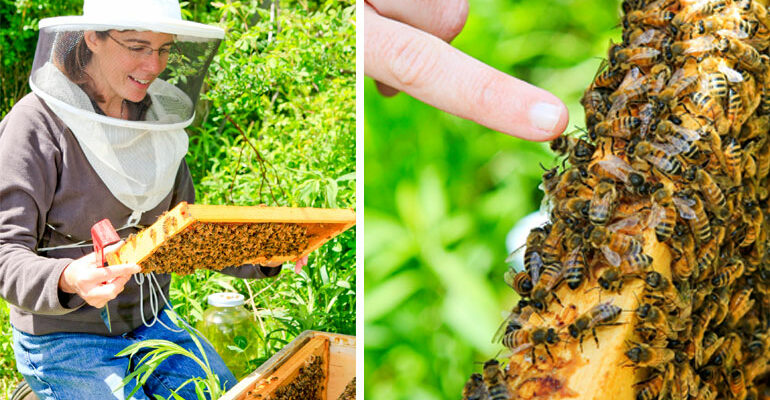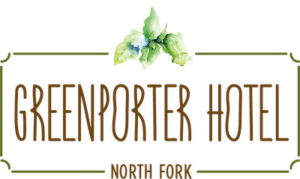Book Review #2
For You Mom, Finally
By Ruth Reichl
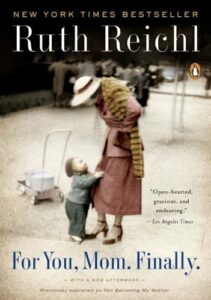 I read Ruth Reichl’s first memoir, Tender at the Bone, many years ago and it never left me. Her writing is so vulnerable, so raw, I cried and I cringed through the details of her childhood that in some ways were extremely foreign yet in other ways very familiar. So when I saw that she had published For You Mom, Finally, I picked it up in the airport book store.
I read Ruth Reichl’s first memoir, Tender at the Bone, many years ago and it never left me. Her writing is so vulnerable, so raw, I cried and I cringed through the details of her childhood that in some ways were extremely foreign yet in other ways very familiar. So when I saw that she had published For You Mom, Finally, I picked it up in the airport book store.
You may know Ruth Reichl for scaling the heights of culinary writing – as the food editor and restaurant reviewer for The L.A. Times in the 80s; colorfully costumed restaurant reviewer for The New York Times in the 90s; writer of many cookbook introductions and editor of compilations; and most recently, editor of Gourmet magazine, from 1999 until its surprise demise in 2009. We know she loves food and that she knows it well. But it is through her memoirs that we learn the tragi-comic back story of her love of all things culinary.
What is remarkable about this book is that the one most painful part of her childhood which was her mother’s mental illness was also the thing the motivated her and eventually defined her success. Her love for food grew out of her pain and the need for comfort that good food brought her. I remembered many details about her life from that book but what always stayed with me were the stories about her mother. So when I saw this book on the shelves, I couldn’t wait to read it. In this book she attempts to let her mother off the hook and perhaps free herself at the same time.
The book is an allegory of her mother’s quest to free herself from the drudgery of domesticity along with descriptions of her mother’s recipes for moldy pudding with pretzels and prunes and the many culinary experiments gone awry.
In the end, she, like all women, wants to emulate her mother in all that is good. However, in every other way, she does not want to become her mother.
However, despite the eulogy, you are left with the feeling that she has not buried the hatchet, or the pudding.
Ruth Reichl had to wade through a lot of pain and pudding to become the food genius that she is today. As she teases out the story of her mother, she writes her own story. As she takes over the kitchen, where her mother was so hopeless, her pots and pans are defense from becoming her mother, the measuring cup and the timer her weapons against chaos. So, after this close examination of their relationship and its reverberations, I feel ready to let her mom off the hook and perhaps now Reichl does too. Finally.
-Deborah Pittorino and Natalia de Cuba Romero
Book Review #1
The Big Oyster: History on the Half Shell
A b-Oysterous Bible of Bivalves
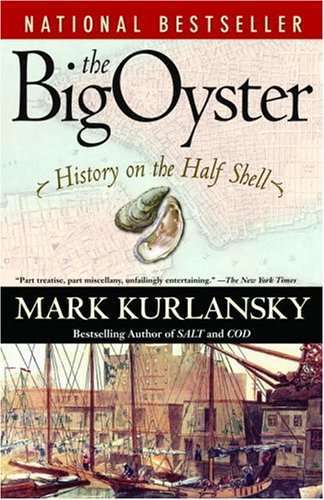
Reading a Mark Kurlansky book is like going out for a couple of beers with your favorite professor. You settle in to a comfortable booth with a frothy pint of anticipation. You tingle with the excitement of entering a more intimate relationship with someone you admire. You enjoy the delicious feeling of being an insider, drinking from the font of specialized knowledge in the very subject that entrances you. And you catch a good buzz. If only you could remember it all….
While Kurlansky has written books for children, books on nonviolence, Basque history, Jewish history and Caribbean history, and has even written a couple of works of nonfiction, it is his research and writing about food that have brought him the most attention. Salt: A World History and Cod: A biography of the fish that changed the world are among his best known. They each take a single and basic raw food item and make them the central figure in his narrative of history. As they move across the ages, they encounter, change and are changed by an astonishing number of climates, cities and cultures. His heretofore humble pantry dwellers travel the world, dragging world history in their wake. But his books are also human stories, peppered with anecdotes, seasoned with odd details, and salted with characters of all stripes from the common criminal to Dickens and Thackeray to ladies of leisure and of dubious character.
As a New Yorker born, if not bred, and aficionado of all my state and city’s history, I find Kurlansky’s The Big Oyster to be my sentimental favorite. And as a voracious consumer of oysters, I really dig the biology; there’s nothing I like better than a whole lot of scientific trivia with which to wash down my bivalves (and impress — or irritate –my dining companions).
The Big Oyster: History on the Half Shell gives it all. Chapters like “The Fecundity of Bivalvency” and “A Molluscular Life” tell us about the oyster itself, while Part Two: The Shells of Sodom, including “The Crassostreasness of New Yorkers” tells us about the people (The chapter names are a good indication of Kurlansky’s nerdy-clever sense of humor). You must remember that Kurlansky is not the most chronological of historians. The tales he tells are too large and complex for straight lines and his own style is too breezy and far-reaching to resist mixing details from one century into a story about the other. Which brings me back to that beer we were drinking with our professor. The Big Oyster, like many of Kurlansky’s books, is a lecture softened into conversation by the dim lights of evening, warmed by the closeness of like-minded friends, lubricated with a good beverage. It leaps ahead, then doubles back, gives a hint of things to come, then dives headfirst into a deep pool of history, comes back up for air, then meanders back along its timeline. Along the way there are recipes fished from earlier eras, etchings from the 1800s, maps of Manhattan before The Dutch East India Company and the real reason why oysters from the South and the North taste so completely different, even though they are from precisely the same species and genus (Ostreidae Crassostrea virginica).
In the end, it is a deeply satisfying and stimulating experience, one that you try — and fail — to remember every detail of, and go back to time and time again to refresh your spirit and your memory, perhaps ordering a half dozen raw ones from Pipe’s Cove or genuine Blue Points to round out the experience.
-Natalia de Cuba Romero
The Big Oyster: History on the Half Shell by Mark Kurlansky, Ballantine, 2006
The New Taste Of Chocolate: A Cultural History of Cacao with Recipes
A Chocolate Extravaganza – no calories, no kidding!
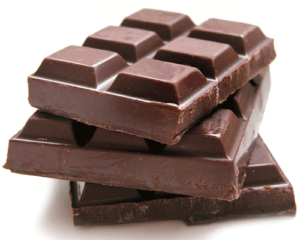
Everything I know about chocolate, I learned from Maricel Presilla. Truly. Food writers like me don’t necessarily know everything about the food they are asked to write about, so we rely on the smarts, wisdom, knowledge and research of others. Sometimes — like when I was asked to write a piece for a national magazine on selected indigenous American foods a few years ago – the writer is lucky enough to know where to turn. For my section on chocolate, I knew that Maricel, a cultural anthropologist, a Ph.D. in medieval history, writer, educator, formally trained chef and co-owner of her own award-winning, pan-Latin restaurants, Zafra and Cucharamama in Hoboken, would be the go-to girl. I called her up and sure enough, she had the goods on chocolate. What I didn’t know until we spoke, was that her passion for Theobroma cacao – the tree that is the source of chocolate — is not only intellectual and sensory, but part of her genetic history. As it turns out, Maricel Presilla is the daughter of a cacao producing family in Cuba with chocolate running through her very veins; encountering her is hitting the mother lode of chocolate information. In a conversation – okay, lecture, she is an educator after all – of an hour and a half, which could have gone well into the following year, she took me on a whirlwind tour of cacao history and meaning. Fortunately for every other chocolate lover on earth who can’t just call her up for a chat with the excuse of writing an article, Maricel has also produced an exhaustive and gorgeous book on the topic.
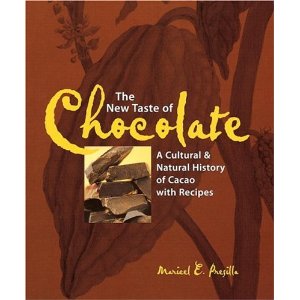
The New Taste of Chocolate: A Cultural History of Cacao with Recipes (10 Speed Press 2001) is as sensuous, subtle and intriguing as its subject. In this lushly illustrated, designed and produced volume, she covers it all, from its origins in Latin America, to its discovery and transformation by Europeans, from its social, economic and spiritual significance to her own personal relationship with the magic bean. It is loaded with information, but written and packaged for easy and unhurried enjoyment. You will also learn how to interpret chocolate labels and which form of cacao to buy for which purpose; it has changed the way I look at (and purchase) the chocolate bar. Love chocolate? Love food history? You need this book.
–Natalia de Cuba Romero
![]()

